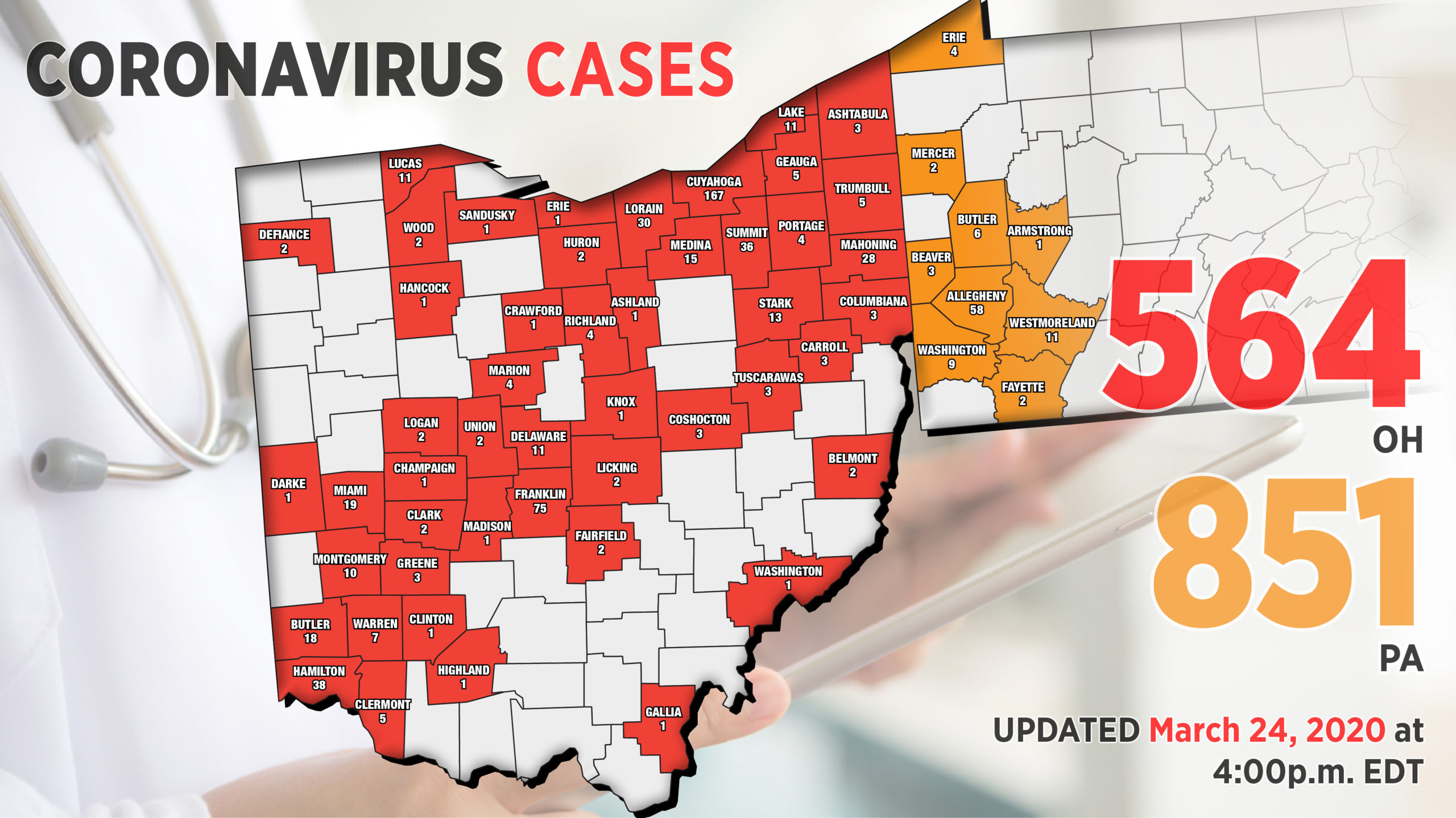DeWine: Quarter of Ohio COVID-19 Cases Hospitalized
YOUNGSTOWN, Ohio — New data released by the Ohio Department of Health and Gov. Mike DeWine’s administration show that at least a quarter of positive COVID-19 diagnoses in the state result in hospitalization.
As of 2 p.m. March 24, there are 564 confirmed cases in 49 counties in Ohio, including 145 hospitalizations and eight deaths. There are 28 confirmed cases in Mahoning County, five in Trumbull County and three in Columbiana County.
During DeWine’s daily update Tuesday, Dr. Amy Acton, director of the Ohio Department of Health, introduced new modeling graphs, showing that 25.7% of all cases are hospitalized. Of those cases that are hospitalized, 62, or 11%, are in the intensive care unit, and 25 of those individuals are from long-term care facilities.
Of all the positive diagnoses, 91 individuals are health-care professionals.
A graph charting the days since reaching one case per million people has Ohio on the same trajectory as Italy, Acton said. Based on current data, most people in the United States can expect to be on a seven- to 14-day lag behind New York City.
“So, the rest of us in the country can sort of see what’s happening in the places where they had their peaks and their testing a little sooner,” she said.
As more testing is done, it will provide a better understanding of the true hospitalization rate in the state. However, she said, “I think that hospitalization rate is good enough for me to know that we’re on the same trajectory as we’ve seen worldwide, and that we need to start preparing that hospital capacity now. And that’s exactly what we’re doing.”
The state’s response to the coronavirus pandemic has been to decrease the spread while increasing hospital capacity, she said. Orders like the stay-at-home order issued Sunday promotes physical distancing, while the order to postpone elective surgeries helps reduce the burden on the health-care infrastructure.
In a worst-case scenario, had the state not taken any measures, it could be seeing up to 6,000 new cases daily, she said. Acton reiterated again the importance of abiding by the stay-at-home order, which went into effect at 11:59 p.m. Monday.
So far, compliance with the order has been “pretty good,” DeWine reported.
“What you’re doing by reducing the spread is absolutely taking the pressure off of the health-care system,” Acton added.
In an effort to build capacity, health care systems are working to convert anesthesia machines to ventilators, building beds and conserving personal protective equipment.
“We clearly do not have enough capacity as it exists today. That shouldn’t surprise anyone,” DeWine noted. However, the governor says “we feel that we’re on track and moving forward” in building that capacity.
The state’s hospitals are at about 60% capacity, and of the 3,600 total ICU beds in Ohio, 1,300 are available, Acton reported. Of the some 15,000 medical and surgery beds in the state, about 6,000 are available.
“On average, we’re needing our hospitals to increase that capacity by 50%,” she said.
One method the state is considering to increase capacity is by converting existing structures into hospitalization facilities, including hotels and college dormitories. The state will be sharing more information on that in the days to come, Acton said.
“We stand ready to use all options,” she said.
Copyright 2024 The Business Journal, Youngstown, Ohio.



